|
Harlequin Teapot in Fiesta's Blue Glaze
Harlequin teapots were made from March 5, 1938 until the line was discontinued in 1964. On the left is a Harlequin teapot in its standard blue glaze. To the right is an example in Fiesta's (dark) blue glaze. It is the only one known to exist.
Indian Woman
In September 1939, the factory created nine novelty figurines. They were listed in company records, along with their model numbers, as: Lamb (1324), Penguin (1325), Indian Model (1327), Indian Woman (1330), Cat (1331), Fish (1333), Duck (1334), Donkey (1336), and Turtle (1337). On October 25, 1939, the lamb, penguin, cat, fish, duck, and donkey were released into production in the four original Harlequin glazes and are known by collectors today as Harlequin Animals.
The other three, the Indian model, Indian woman, and turtle, never made it beyond the samples stage.
The Indian Woman shown stands 5" tall and is glazed in ivory. The Indian model (presumably a man) and turtle samples are yet to be discovered.
Rose Ebony
Rose Ebony is a rich, dark glaze from the very early stages of Fiesta's development. Frederick Rhead mentions the glaze on several occasions in his 1935 journal. It must have received serious consideration since a wide range of test pieces have been found. Besides those shown here, a covered sugar (with flat bottom), stick handled creamer and an early size 10" comport have been found.
The following comes from an article by Rhead from the 1937 Pottery and Glass Journal and talks about the fifth Fiesta color. It was reprinted in The Collector's Encyclopedia of Fiesta by Sharon and Bob Huxford, 8th Edition, ©1998, page 9 and reads in part:
"The fifth color was the hardest nut to crack. Black was too heavy, although this may have been used if we could have had six or more colors. We had no browns, purples, or grays which would tune in. We eliminated all except two colors: a rich turquoise and a lovely color we called rose ebony. But there seemed to demand a quieting influence; so we tried an ivory vellum textured glaze which seemed to fit halfway between the yellow and the regular semi-vitreous wares and which cliqued when placed against any of the four colors selected."
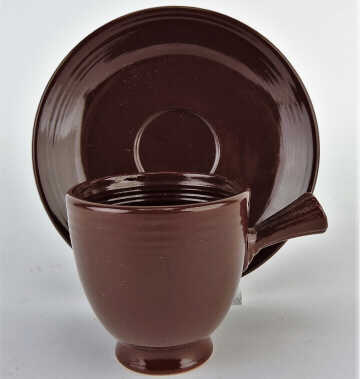
Rose ebony Fiesta demitasse cup and saucer |
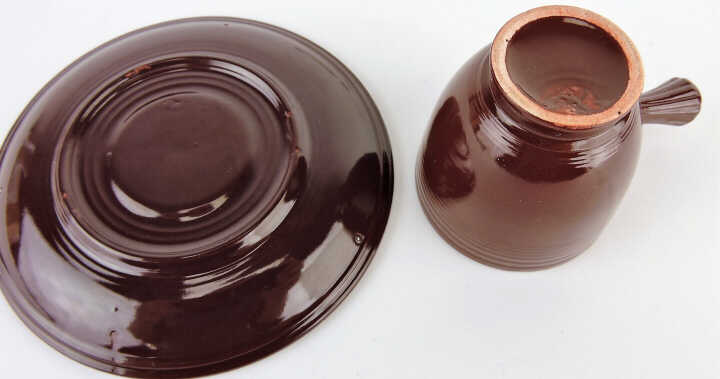
Underside of demitasse cup and saucer |
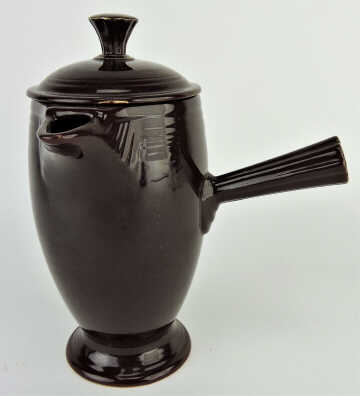
Rose ebony Fiesta demitasse coffee pot |
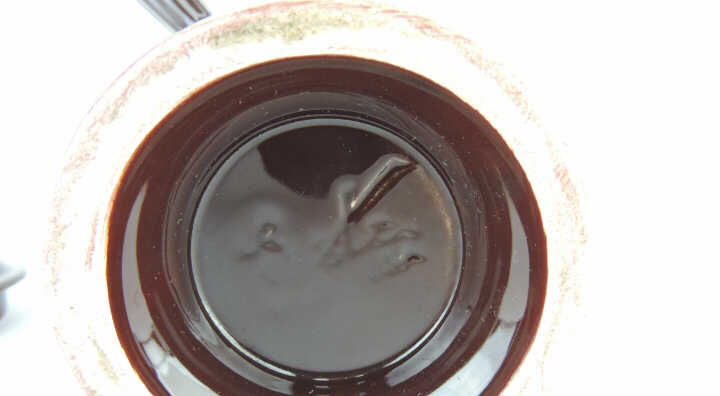
Demitasse coffee pot marking |
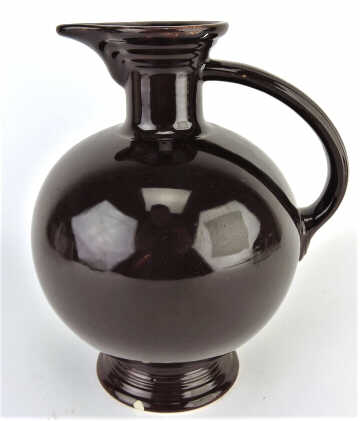
Rose ebony Fiesta carafe in rose ebony |
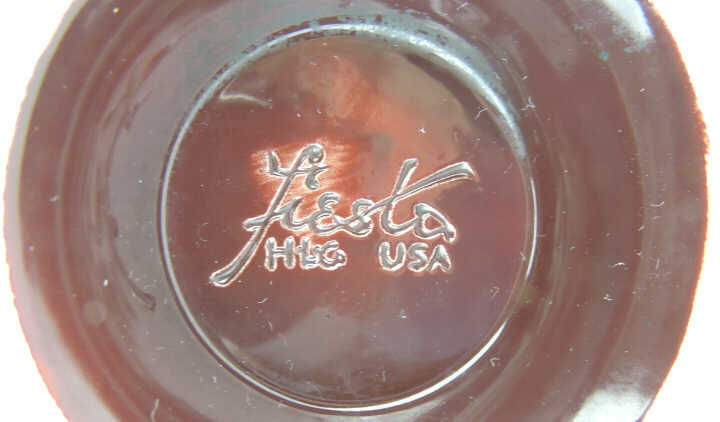
Fiesta carafe marking |
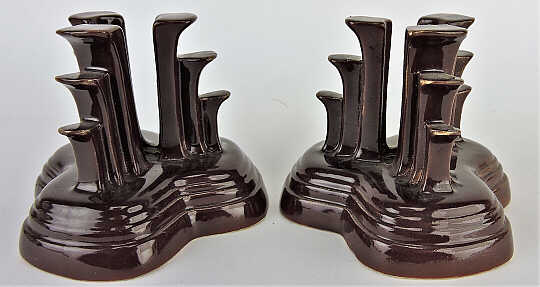
Rose ebony Fiesta tripod candlesticks |
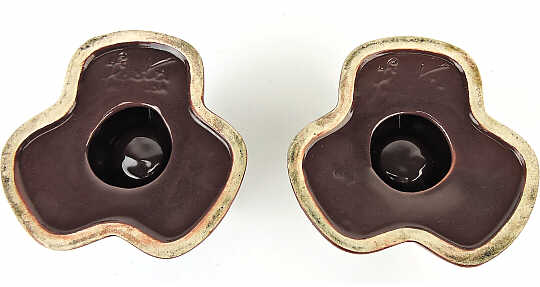
The earliest versions of Fiesta tripods were made with dry feet |
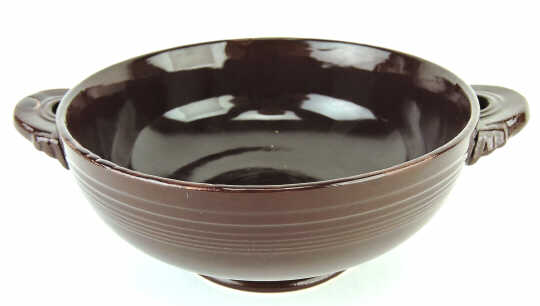
Rose ebony Fiesta cream soup cup |
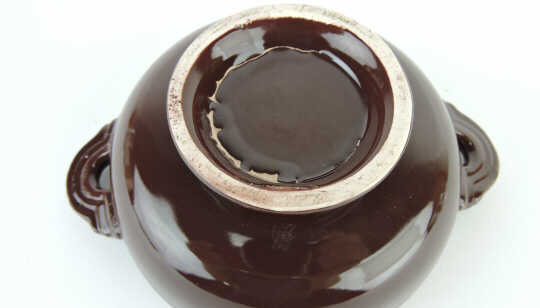
Underside of the cream soup cup |
Ski Mugs
In mid-1938, HLC worked on several versions of handled mugs in various shapes. There were several styles of bodies: cylindrical (model 1111), conical (model 1112), barrel (model 1118) , as well as shorter, more traditional looking mugs. The handles varied on these basic forms to create different mugs. For example, the conical shape, model 1112, was given five different handles - three of which came from the Swing Eggshell dinnerware line. The cylindrical mug, model number 1111, was given five different handles. Records indicated they had very similar capacities averaging 9 ½ fluid ounces.
Each started out as being called simply "mug" in the modeling log with no reference as to a retailer or decoration so the intent for these mugs is unclear. Later versions are referred to as "Ski" mugs.
In late 1938, two more Ski mugs were made, this time holding 11 ounces each. Fifteen distinct mugs in all were created, but there was no indication any of them went into production.
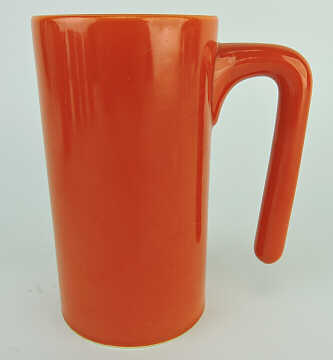
|
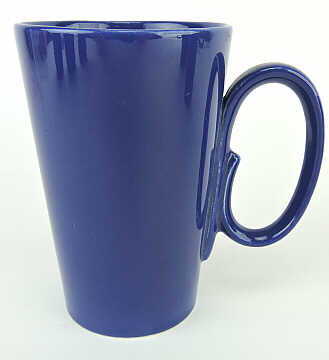
|

|
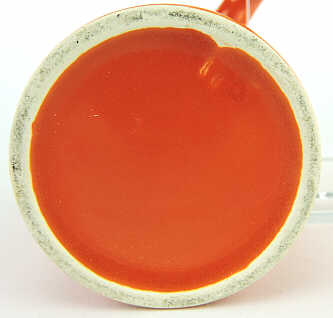
Model 1111 mug
with Model 1115 handle in red |
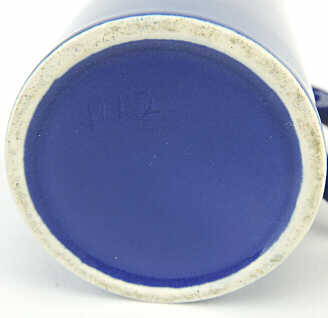
Model 1112 with Swing
coffeepot handle |
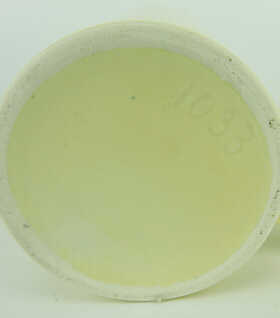
Model 1033 in old ivory,
later revised to become model 1111 |
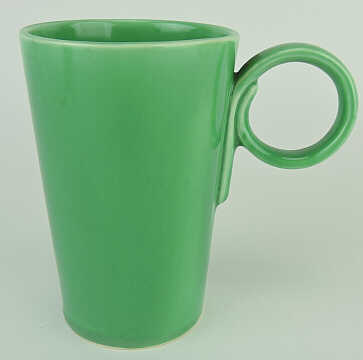
|
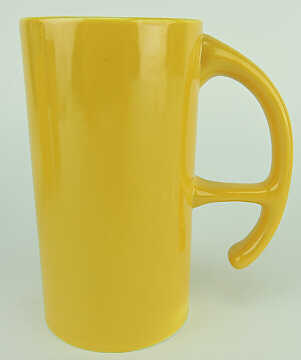
|
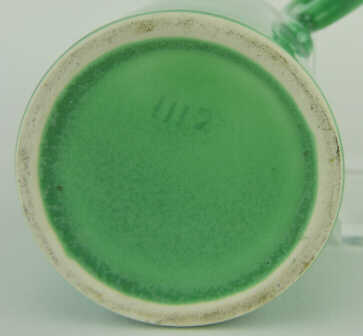
Model 1112 mug
with model 1020 handle |
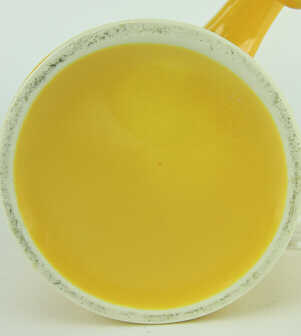
Model 1111 mug
with model 1116 handle |
Vinegar Jug
This cruet, or vinegar jug as it is called in the log, was modeled in September 1938. It was made with a cork seal - very similar to the Fiesta carafe lid. This particular example was glazed in Fiesta dark blue and was marked with its model number, 1135.
Experimental Teapot
Modeled by Al Kraft, this 6-cup medium teapot was also called a "Hot Water Pot." Listed as model number 545, it was created in February of 1936. In late February and early March, Rhead mentions samples of "percolators" as well as Fiesta teapot stands. It is possible this piece was meant to be a percolator or a "Drip-o-lator" which was a popular piece by other companies at the time.
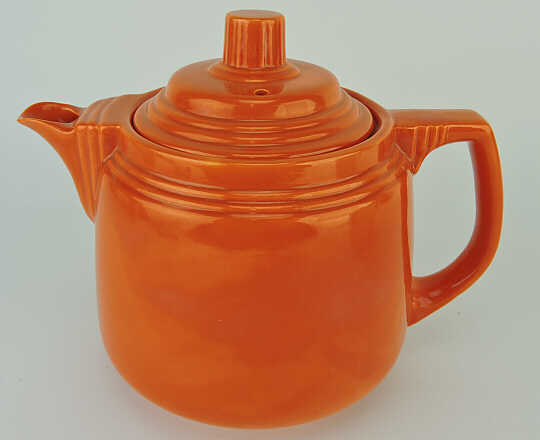
Experimental teapot in red |
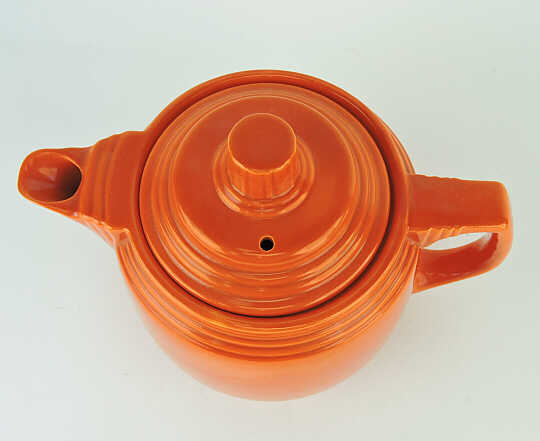
Lid detail |
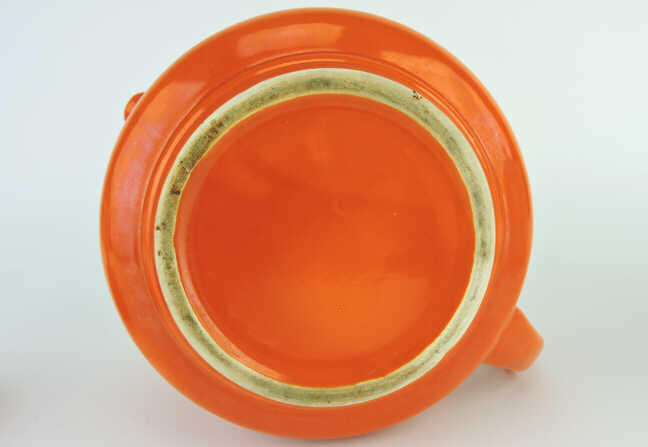
Underside of teapot |
Experimental Fiesta
The top two photos are of an onion soup base prototype. This version was made in March 1935, but it was replaced by the standard covered onion soup in August 1935 which itself underwent subtle revisions. Besides the red base shown here, a complete unit has been found in green.
The bottom photos show what looks like a regular Kitchen Kraft jug, but this is actually a smaller version. It is model number 833 and like its larger counterpart, it was made with a cover. The small jug is one of the few pieces of Kitchen Kraft not to go into production. This unmarked version was glazed in Fiesta red.
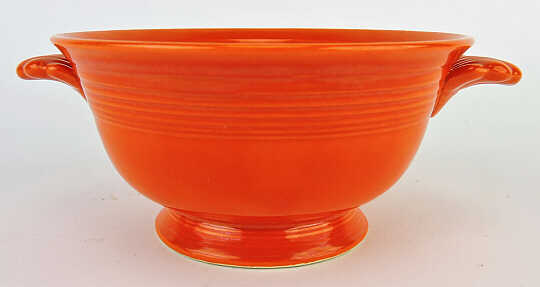
Prototype onion soup base in Fiesta red |
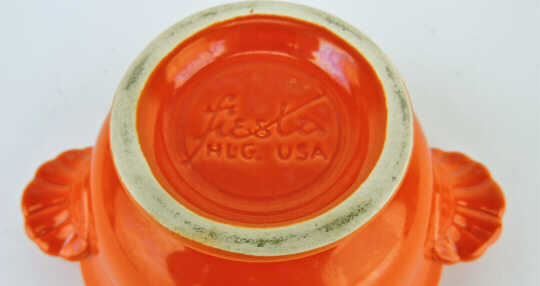
Prototype onion soup marking |
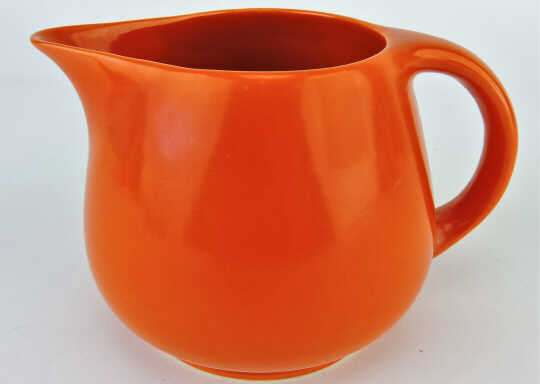
Experimental small Kitchen Kraft jug |
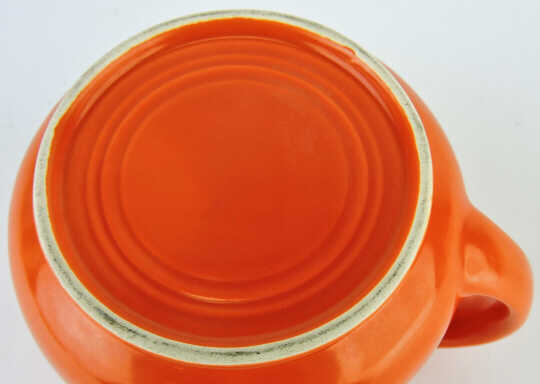
Underside of small Kitchen Kraft jug |
|